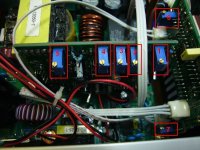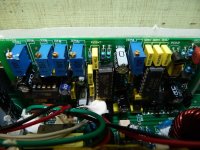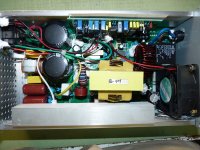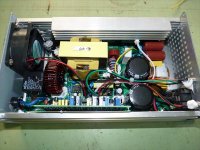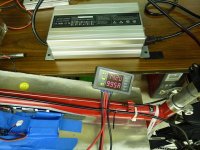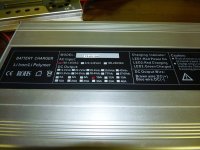deVries
100 kW
Methods thinks this is a good/decent charger, except for the high shipping costs, so I thought this thread should contain all the info we can find on this charger & put it in one place, here. Current price is $88 usd +expensive shipping July 2012. I bought one to try so will report to this thread over time how well it works for me. [Edit: I should add that there are higher quality & more efficient Power Supplies that can be easily converted *with* some DIY skills, and one excellent option is the Meanwell RSP-1000 though the voltage is limited to 55v. Also, Alan B. is going to be converting a *very* efficient PS to a charger too up to 58v 6A.]
If you buy one of these EMC-1000 chargers, then I highly advise you do a "burn-in" of 5-10 charge cycles upon receipt. Most failures happen within the first 5-20 charge cycles, so you want to be able to replace a defective unit upfront w/warranty replacement.
Methods comments:
If you buy one of these EMC-1000 chargers, then I highly advise you do a "burn-in" of 5-10 charge cycles upon receipt. Most failures happen within the first 5-20 charge cycles, so you want to be able to replace a defective unit upfront w/warranty replacement.
Methods comments:
methods said:I set up a spreadsheet comparing nearly every aspect of the various models. After focusing down on the 1.2KW and 900W I found that the 900W was a "better value" in nearly every important category
$ / Watt
Watt / kg
Watt / Volume
% actual output vs rated output
This boils down to the fact that the 900W is "maxing out" its housing while the 1.2kw is under powered for its housing. This large 1.2kw housing takes it out of the running for being "portable".
My impression of the 900W units upon arrival was that they were very much within the realm of "backpackable". They are small and tidy. The voltage and current markings are accurate enough for indication use. The power cord that was supplied was beefy 14G.
They tuned the supply to the 75.6V @ 10A that we requested and even supplied mating Anderson connectors (though they were counterfeit)
We steered away from the 1200W unit because of a few factors
Twice as heavy
Twice as big
Half again more expensive
Power increase was not worth these costs
So in the end we felt that ordering a supply that could fit in a backpack, was light weight, cost effective, and could put out an honest 750W was the best for us and our customers.
Anyhow - this was a surprise for us as my gut feeling was that we should get the 1.2KW unit. It is always wise to do a proper cost-benefit analysis because sometimes the results will surprise you. This of course depends on what you value though - and we value portability. If on the other hand what you value is something that is overbuilt - the 1.2KW unit would have won out.
-methods


